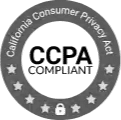Leading vs lagging indicators for measuring sales success

Table of Contents
What are sales indicators?
Sales KPIs are vital for tracking sales and business health, but which ones should you follow most closely? Learn what are the leading and lagging indicators that sales leaders need to measure, examples of leading and lagging indicators, the value that each one provides, and how to understand the metrics you receive.
Sales drive revenue for your company, so it makes sense that all the activity that surrounds them are among the most highly measured parts of your business. Sales indicators – also known as key performance indicators or KPIs – help you to track the success of your sales team, identify which sales methods, funnels, and tactics are the most effective and which need to be reviewed, and to forecast cash flow on an ongoing basis.
Often they are the basis for compensation for the sales team as well, so salespeople keep a close eye on whatever KPIs will affect their own personal bottom line.
What’s the difference between leading and lagging indicators?
Which are the relevant KPIs for measuring sales and overall business health? There are so many that it can be helpful to break them into two main categories – leading vs lagging indicators.
But what are lagging and leading indicators? Leading indicators are the ones that show what sales are likely to come in the future while lagging indicators tell you about what has already happened in the past. Lagging indicators are much easier to measure because they have already happened. These are typically sales that have already occurred, reports on quarterly results, and so on.
As Barnard Marr wrote, “If you think of your business like a car, leading indicators would look out from the windshield and focus on the road ahead while lagging indicators will look backward (out the rearview mirror) at the road you’ve already traveled—did you achieve the intended result or not?”
Just as it’s hard to drive your car while looking backward it’s the same with your business. You need to measure where you’ve been and if you’ve accomplished your sales goals, but you always need to have an eye on where you are going and what is next. Keeping an eye on the leading indicators will help you predict how successful your sales team will be.
Here’s our take on some of the main sales metrics that B2B companies should be tracking. Let’s start with looking at lagging indicators since they are much easier to measure and interpret.
What are lagging indicators?
Revenue – per deal, per time frame
The key sales indicator that most companies track is their revenue, and depending on the average deal size this can be tracked on a daily/ weekly/ monthly or quarterly basis. I won’t get into too much detail about this because, well, everybody’s doing it :).
Sales cycle length
Your sales cycle length shows how long it takes to nurture an opportunity through all the stages in your pipeline. The shorter your sales cycle, the more deals you can complete in the same amount of time.
By tracking the length of the sales cycle, and keeping close track of where deals sometimes get stuck along the way, you can forecast the number of sales in the next period of time by estimating how long it will take for the deals currently in your pipeline to convert.
You can also compare the sales cycle length across different employees or teams to judge their relative proficiency and see if sales reps are shortening their sales cycle and improving their performance over time. Or compare sales cycle length across product lines to see which product lines can be used for “quick fixes” for a slow quarter because they have shorter sales cycles.
That said, sales cycles can vary depending on the type or source of the sales lead. For example, prospects generated from inbound vs. outbound activities may have different sales cycle lengths.
Conversion rate
Measure the conversion rate for each stage of the pipeline to discover how many leads convert at each point, as well as the overall lead conversion rate. Compare it with benchmarks for your industry to see how you’re performing relative to the rest of the market, and establish a baseline so that you can track improvement.
Often companies arrange their pipeline steps & conversion rates into a kind of a funnel, so you can see how “leaky” your process is at each step. This can be done for the marketing funnel, from lead to opportunity, and for the opportunities in the pipeline.
Once you know your conversion rate and sales cycle length, you’ll know how many leads you need to generate, and thus how many sales opportunities and even closed deals to expect in a given time period, and how many reps you need to hit your revenue targets.
If your conversion rate from one stage to another is poor, ideally you would zoom in and try to understand why that is; is it something rooted earlier on in the sales cycle (for example, poor initial qualification)? Wrong target market? Sales reps that simply haven’t mastered that aspect of selling and need more sales training?
Your conversion rate may differ based on the source of the opportunity, so bear that in mind and segment by lead source to see which are converting better than others. Zooming out to the overall conversion rate for each source of opportunities can quickly reveal your best, most productive revenue sources.
Customer lifetime value (CLV or CLTV)
The customer lifetime value tracks how much revenue you’re receiving from each customer across all their purchases and interactions over time, rather than just looking at a single moment in their relationship with your company.
CLTV is affected by a number of things, including the number of purchases made by that customer, the size of the purchases, their retention rate, and more. You’ll need to subtract the cost of acquisition from each customer’s revenue to discover the net CLV.
What are leading indicators?
Sales activity metrics
There are a number of sales activity metrics — typically for sales development reps but sometimes for other types of salespeople as well — that managers should track both on an individual basis and per the whole team.
Once you know your conversion rate (a lagging indicator), you should be able to use that to calculate how many leads you need, and how many calls your team needs to make in order to get the right number of deals into the pipeline.
Some of the sales activity metrics that are typically tracked for SDRs include:
- Number of calls made (per day, per week)
- Number of emails sent (per day, per week)
- Number of overall connections with the target completed
- Number of meeting scheduled
- Response time to inbound leads
By keeping a close track on these numbers, you should be able to identify early if you will have enough deals on your pipeline to achieve your target revenue numbers. These metrics also help you zero in on the highest-performing employees, those who could do with more sales coaching, and which representatives excel at different stages of the sales cycle. For example, some might struggle to close deals but shine when it comes to sales discovery calls.
It’s also a good idea for individual sales representatives to track their own sales activity metrics, so they can check which actions have the best results and refine their own behavior.
Sales readiness
Sales readiness is one of the only true leading sales indicators (even the number of calls made or meetings scheduled is a kind of a lagging indicator if you think about it…) It measures the confidence of your sales representatives, their product knowledge, and their mastery of your value messaging, so that you can work out if they’re ready to head out and smash the sale, or are still feeling a bit timid about things.
Ensuring sales readiness is typically the job of the sales enablement team, and can include a combination of preparing playbooks, running training sessions, certification programs, and of course sales coaching.
I was recently chatting with one of our customers about how she ensures her company’s salespeople are “sales-ready,” and she said that even if they pass every single quiz in the Learning Management System, she’s not confident that they are sales-ready until they have experienced role plays, so they get a chance to actually try out their knowledge in the heat of the moment.
And her salespeople agree! To accomplish this, she uses Second Nature for sales training role-play with the AI Jenny. As a result, they can measure sales readiness in an objective score for each sales rep, and can zero in on where reps need extra coaching or extra practice before hitting the field, and thus improve the sales performance of your team.
Knowing your sales reps are sales-ready can give you more confidence in your revenue projections since you know that the salespeople will be adept at all different types of sales conversations and can move deals quickly through the pipeline.
Sales indicators guide your sales teams to success
Sales metrics can give you visibility into your sales processes, guiding you to which parts need improvement. When you identify the most relevant sales indicators and track them over time, you’ll be able to produce a detailed picture of your sales pipelines, future revenue, and most effective sales employees, helping you focus your efforts to further refine them and drive more profitability.
Learn how Second Nature can help better prepare your sales team for success.
Related Resources:
FAQs
What are examples of lagging indicators?
Revenue per deal is the lagging indicator that’s used most widely, but sales cycle lengths, customer lifetime value, and conversion rates are also valuable lagging indicators.
What are examples of leading indicators?
The best example of a leading sales indicator is sales readiness, which measures whether your salespeople fully understand your solution, know the intricacies of your value messaging, and feel confident about their ability to conduct a sales call – in short, whether they’re ready to sell!
How do you tell if an indicator is leading or lagging?
The clue is in the name. A leading indicator tells you what to expect for future sales, so it relates to deals that haven’t yet taken place. Lagging indicators are the ones that drag behind completed sales to give you insights into what already happened. Leading indicators include sales readiness and sales activity metrics, while lagging indicators include revenue reports for sales that have already been completed, or conversion rates for calls that already took place.
We’re Hiring
We have positions available in our Tel-Aviv and New York offices and remote/hybrid.

 12 MIN. READING
12 MIN. READING


